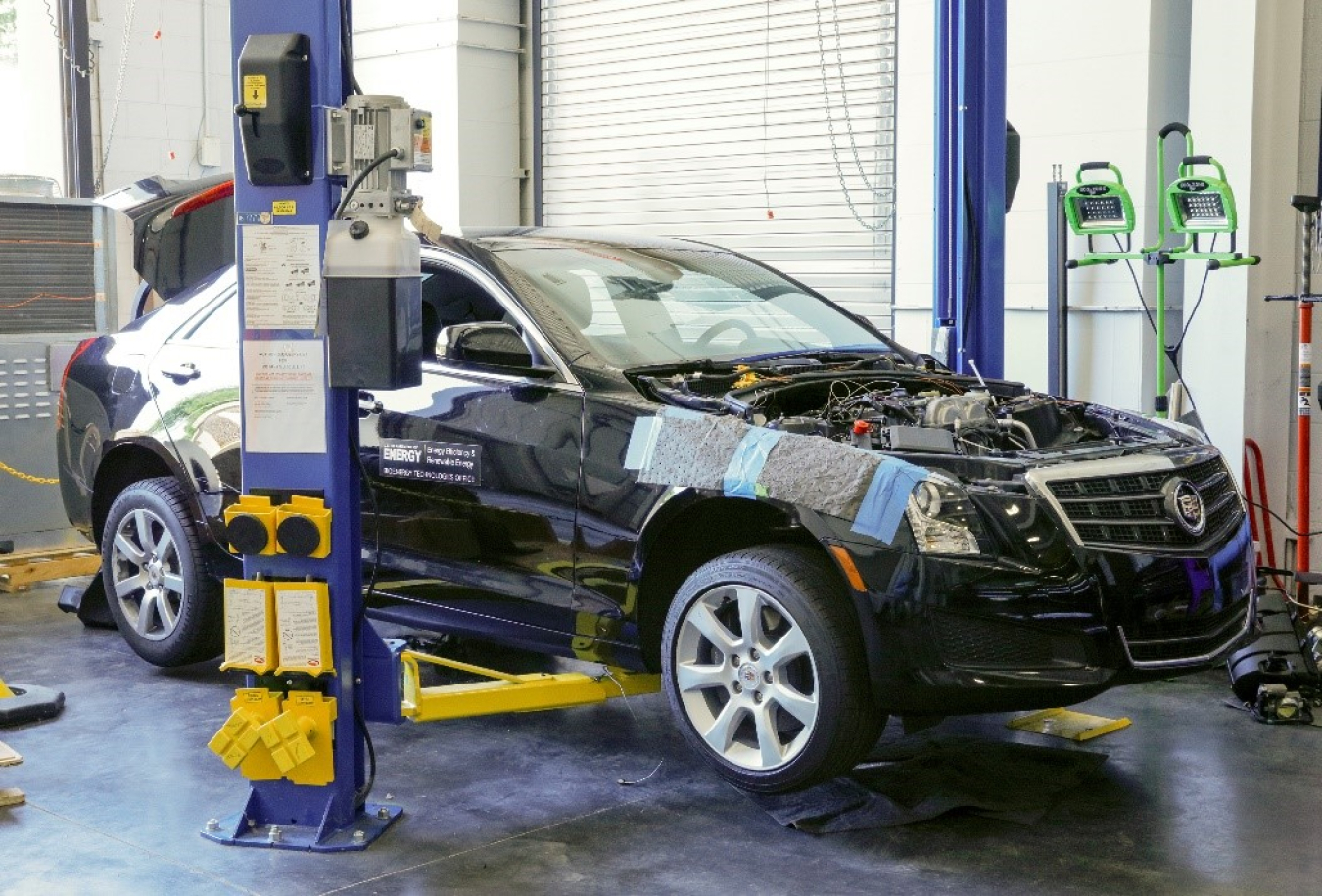Is it possible to increase your vehicle’s performance and fuel efficiency while also slowing climate change through reduced greenhouse gas emissions? New research says yes.
Office of Critical Minerals and Energy Innovation
November 10, 2016
Researchers at Oak Ridge National Laboratory conducted biobased, high-octane fuel experiments using this modified turbocharged Cadillac. | Photo courtesy of Oak Ridge National Laboratory.
Is it possible to increase vehicle performance and fuel efficiency while also slowing climate change through reduced greenhouse gas emissions? New research by Oak Ridge National Laboratory, and funded by the Energy Department’s Bioenergy Technologies Office (BETO), indicates yes! Oak Ridge National Laboratory scientists modified a Cadillac sedan and verified that with car engine and system modifications, vehicles can run on gasoline blended with higher levels of biofuel without sacrificing fuel economy, and all while achieving better vehicle performance and 30% lower greenhouse gas emissions compared to conventional gasoline-powered vehicles.
This research supports the Energy Department’s new Co-Optimization of Fuels & Engines (Co-Optima) initiative. Co-Optima is a partnership of BETO, the Vehicle Technologies Office, national laboratories, and the automotive industry to design new fuels and engines together that maximize vehicle performance, fuel efficiency, and greenhouse gas emission reduction benefits.
One key to realizing all of these benefits together is octane rating. Automakers have long known that boosting the octane rating of fuels can also translate to vehicle performance benefits such as faster acceleration or greater towing capacity. This is why many high-performance vehicles require the use of the “premium” (higher octane rating) fuel commonly available at gas stations. However, car manufacturers must design car engines to utilize the octane benefits of the fuel. Ethanol is a type of biofuel for cars that is already commercially widespread in the United States. Fuel manufacturers have been adding ethanol to gasoline for decades to help reduce air pollutants, which explains the “Contains 10% Ethanol” labels that you see at the gas pump. It has a high octane rating, but conventional vehicles cannot fully utilize its octane benefits.
Ethanol is also less energy dense than petroleum-derived gasoline. This means that you currently get fewer miles per gallon on a gasoline-ethanol blend than on gasoline with no ethanol. However, with Oak Ridge National Laboratory’s new research, this could change. Researchers modified a car engine so that when it uses a fuel blend of 40% ethanol and 60% gasoline, the fuel efficiency increased because the fuels’ high octane rating offsets the lower energy density of the fuel. The national laboratories published a report on these findings, with additional information posted on the Bioenergy Knowledge Discovery Framework.
Researchers found that this fuel blend could have 30% lower greenhouse gas emissions compared to gasoline if the ethanol is made from the cellulosic, non-edible parts of plants or other biomass sources such as corn husks and stalks, grasses, forestry residue, organic wastes, and algae. Cellulosic ethanol is becoming cost-competitive, in part from BETO-funded projects. In 2012, BETO and the national laboratories demonstrated two ways to produce cellulosic ethanol at about $2 per gallon. Cellulosic ethanol began to enter the market in 2013 in small quantities, and as it becomes more commercially viable, U.S. motorists could be using it daily.
Utilizing biobased, high-octane fuels with modified car engines could achieve the best of both worlds—high vehicle performance and fuel efficiency, while lowering our greenhouse gas emissions.


